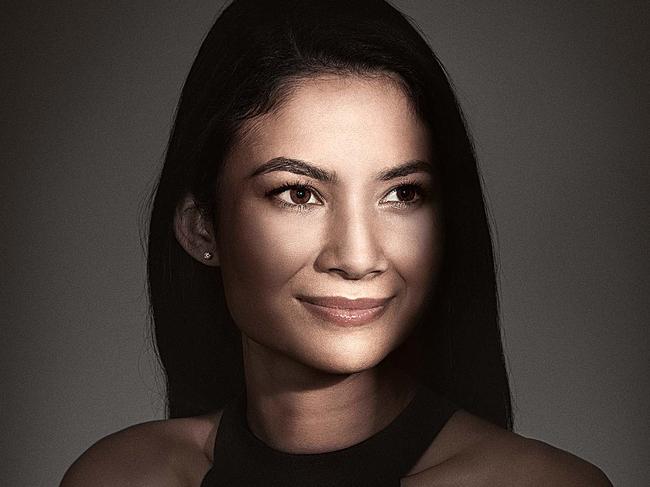Australia’s Richest 250: Melanie Perkins and the unicorn
Melanie Perkins was running her first start-up when she met Bill Tai. There are a few million reasons why you need to know what happened next.

Melanie Perkins was running her first start-up, Fusion Books, when she met venture capitalist and kite-surfing fanatic Bill Tai at a conference in her home town of Perth in 2010. The American multi-millionaire was interested in Fusion and gave Perkins an open invitation to visit him in San Francisco.
Six months passed before she jumped on a plane and the events that followed would change her life, as she developed the concept for an online graphic design platform known as Canva. Tai would become one of her first backers, alongside Hollywood actors Woody Harrelson and Owen Wilson. But he would also open doors.
“Bill introduced me to Google Maps co-founder Lars Rasmussen. Together, they introduced me to a range of people, including our co-founder, Cameron Adams, and CTO (chief technology officer) Dave Hearnden,” says Perkins, the youngest debutante on The List.
■ THE LIST: Australia’s Richest 250
“I had never met someone like Lars who had worked on a product that had such a huge global impact, let alone being the inventor of it. I think I subconsciously thought that people who have such a huge impact must be from another planet. But Lars was incredibly supportive of me and my vision and it completely transformed what I believed was possible.”
Most importantly for Perkins, she realised that people like Rasmussen could still be down-to-earth and normal – traits she and her fiancé Cliff Obrecht have steadfastly maintained despite Canva growing to where it is now worth a staggering $4.7 billion after several fundraising rounds. Together, the 32- and 34-year-old are worth $1.32 billion based on their stake in the business. Yet Perkins still makes her own coffee and lunches with her staff each day. Last year Obrecht proposed to her in Turkey’s backpacker-friendly Cappadocia region with a $30 engagement ring.
Venture capital industry legend, former Packer family executive and co-founder of AirTree Ventures Daniel Petre, who with his partner Craig Blair has backed Canva since 2015, describes Perkins’ humility as “amazing”.
“She and Cliff are not hung up on the money side, the valuation,” he says. “They are more focused on changing the way design is done and making it more accessible. They have stayed very true to their passions and goals rather than becoming like ‘Look at us’.”
Petre also notes that Perkins and Obrecht have a social conscience. Their platform currently houses more than 25,000 not-for-profits that use Canva for fundraising.

“Years ago when I was backpacking with Cliff in India, we met a young man who was working at a tiny internet café,” Perkins says. “He was living away from his family and working around the clock, seven days a week. He slept there each night and made a dismal $1 each day. Sure, I work hard, but there are many other people in the world who work just as hard. The vast difference between us lies in the opportunity I have had, being born in Australia, getting a good education, [and] having a supportive family – the so-called genetic lottery.”
Perkins’ humility comes from her roots. The daughter of an Australian-born teacher and a Malaysian engineer of Filipino and Sri Lankan heritage, she started her first business at the age of 15 from her mother’s living room, creating handmade scarves to sell at shops and markets in Perth. Then, at the University of Western Australia, where she taught computer design as part of her communications and commerce studies, she confronted the difficult reality of navigating graphic design software, and Canva took off.
Canva now has more than 20 million monthly users for its products globally, a number of whom pay nothing for them. It has a smaller set of customers who pay for a more advanced version of the site, from whom it generates revenues and profits.
“Having ‘crazy big goals’ is inherently humbling,” Perkins says. “A truly crazy big goal cannot be achieved on your own; you need the talents, skills and passions from many people who all have different skills and strengths
“The very existence of our company requires us to satisfy and delight our customers. They can choose to use us and they can choose to pay us. We need to satisfy and delight our investors with our progress and our vision. We need to satisfy and delight our team to feel inspired and to want to do the best work of their lives. I can’t imagine feeling anything but humbled by the sheer amount of work that needs to be done in order to uphold each of these promises.”
Blackbird co-founder Rick Baker, who led the company’s first funding round in 2013, says Canva is doing graphic design in a democratised way. “Their strong culture is of working together, doing things sometimes in a kooky way and having fun while they do it, but working hard too – that mix has caused some magic within the team,” he says. “And that culture clearly emanates from Mel. It’s her natural enthusiasm for the product. They’re now more than 1000 people and she’s managed to create this enthusiasm for the product, and they each celebrate their roles.
“This culture has not just been developed by chance. Mel, Cliff and Cam have worked really hard and thought hard about how they make Canva, how they keep this culture and how they make sure it doesn’t feel like a big business.”
Baker says Perkins has grown as a leader over the past six years and become a role model for other young founders, showing you can build a global business from Australia. Canva has now raised about $333 million since it started in 2013, including a raising in early 2018 that gave it a $US1 billion valuation for the first time – so-called “Unicorn” status. Another of its local backers is the Paul Bassat-run and James Packer-backed Square Peg Capital.
Most importantly, Canva is profitable, using the favoured metric in the start-up world of adjusted EBITDA, which strips out stock-option, financing and tax expenses. Last year it revealed its 12-month revenue run rate would be $291 million by the end of 2019.
“The most critical thing for entrepreneurs is to solve a real problem,” Perkins says. “You want to make sure that the solution you create solves a problem that people care about. When you find a problem that people care about, it will make every other aspect of running a business much easier.
“We have a very simple two-step plan: 1) to build one of the world’s most valuable companies and 2) to do the best we can. I hope with the opportunity that has been afforded to us we can use it to bring a little more equality to the world over the years to come.”
Daniel Petre rejects suggestions Canva may be over-valued, noting that at each capital raising it has “grown into that number really quickly.”
He won’t reveal how much money the company has made AirTree, which raised an initial fund of $60 million in 2014 before more than quadrupling that value two years later when it closed the largest ever Australian venture capital fund at $250 million. “But I can say that the Canva investment, as it sits, more than pays for our first fund,’’ he quips.
“In all the years I have been doing this, I can count on one hand the people I have seen like Melanie. She is special. If there is something more unique than a unicorn, that is Melanie.”





To join the conversation, please log in. Don't have an account? Register
Join the conversation, you are commenting as Logout